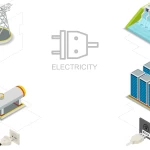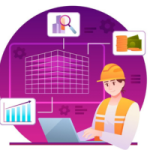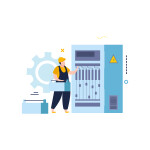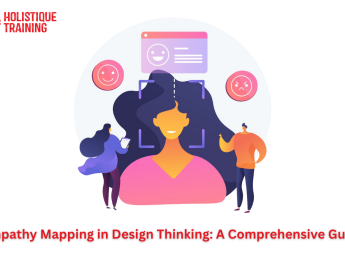- Table of Contents
- Introduction
- Key Objectives of Power System Protection
- Some Key Points:
- Components of Power System Protection
- Key Components:
- Types of Faults in Power Systems
- Key Types of Faults:
- Protection Schemes and Methods
- Key Protection Schemes:
- Challenges in Power System Protection
- Key Challenges:
- Table of Key Challenges in Power System Protection
- Recent Advancements in Power System Protection
- Recent Advancements:
Introduction
Power system protection refers to the set of technologies and methods used to detect, isolate, and mitigate faults in electrical power systems to ensure the safe, reliable, and efficient operation of the grid. In electrical networks, faults such as short circuits, overloads, and ground faults can cause significant damage to equipment, disrupt power supply, and even pose safety risks. Protection systems are essential for detecting these faults and quickly disconnecting the affected sections to prevent further damage or instability. With the growing complexity of modern electrical grids, including the integration of renewable energy sources and smart technologies, effective power system protection has become more critical than ever to maintain continuous power flow and safeguard equipment.
Key Objectives of Power System Protection
The key objectives of power system protection are critical for maintaining the safety, reliability, and operational efficiency of electrical power networks. One of the primary goals isensuring safety, which involves protecting human life, operators, and personnel from the dangerous effects of electrical faults, such as electric shocks, fires, or explosions. Power system protection schemes are designed to detect abnormal conditions quickly and isolate faulted sections, preventing potential harm. In addition to safety, an essential objective ispreventing equipment damage. Electrical faults, such as short circuits or overloads, can lead to catastrophic damage to vital components like transformers, generators, and circuit breakers. By implementing effective protection mechanisms, costly equipment failures and subsequent repair or replacement costs can be avoided, ensuring the long-term health of the power system.
Another critical goal isminimizing service disruptions, as power outages can have widespread economic and social impacts. When a fault occurs, protection systems must operate swiftly to isolate only the affected part of the network, allowing the rest of the system to function normally. This selective isolation ensures that the majority of consumers experience minimal downtime, maintaining business continuity and the smooth functioning of industrial, commercial, and residential operations.Enhancing system reliability is also a fundamental objective of power system protection. A reliable system is one that consistently delivers power without interruptions, despite potential faults or disturbances. Protection schemes help maintain this reliability by preventing cascading failures, reducing the frequency and duration of outages, and supporting faster recovery when faults do occur.
Some Key Points:
- Ensuring Safety: Protecting personnel and preventing electrical accidents.
- Preventing Equipment Damage: Safeguarding expensive power system components.
- Minimizing Service Disruptions: Reducing the extent and impact of power outages.
- Enhancing System Reliability: Maintaining consistent and reliable power delivery under fault conditions.
By achieving these objectives, power system protection plays a vital role in the stable, safe, and efficient operation of modern power grids.
Components of Power System Protection
Thecomponents of power system protection form the foundation of any protective scheme, working in unison to detect, isolate, and mitigate faults in electrical power networks. One of the most vital components is theprotective relay, which serves as the "brain" of the protection system. These devices monitor electrical parameters such as voltage, current, and frequency and compare them against pre-set thresholds. When an abnormality, like a short circuit or overload, is detected, the relay signals the circuit breaker to disconnect the faulted section. Protective relays come in various types, including electromechanical, solid-state, and digital relays, each offering unique features and applications depending on system requirements. Relays are designed to be highly responsive and accurate, ensuring the swift identification of faults, which is critical for protecting both equipment and the network.
Complementing the relay's role is thecircuit breaker, another essential protection component that acts as the physical disconnect switch. Circuit breakers operate based on the signals received from protective relays and are responsible for opening or closing electrical circuits. During normal operation, they remain closed, allowing power to flow through the system. When a fault is detected, however, circuit breakers rapidly open, cutting off the flow of electricity to prevent equipment damage and safeguard the system. They are designed to handle high fault currents and can reset automatically or manually after fault clearance.
Additionally,current transformers (CTs) andvoltage transformers (VTs) play key roles in measuring and monitoring electrical conditions.CTs are responsible for reducing high current levels to measurable values that can be safely monitored by relays and meters. They ensure that the protection system can accurately measure fault conditions, even in high-voltage scenarios. Similarly,VTs reduce high system voltages to safer, manageable levels that can be fed into protective relays for continuous monitoring. Both CTs and VTs provide essential data, enabling relays to make precise decisions about whether to activate the circuit breakers.
Key Components:
- Protective Relays: Monitor system conditions and initiate fault-clearing actions.
- Circuit Breakers: Physically disconnect faulted sections based on relay signals.
- Current Transformers (CTs): Measure and step down high currents for monitoring.
- Voltage Transformers (VTs): Measure and step down high voltages for monitoring.
Together, these components form an integrated system that ensures power systems remain safe, reliable, and operational by identifying and responding to faults with speed and precision.
Types of Faults in Power Systems
Types of faults in power systems represent various electrical disturbances that can significantly disrupt the normal operation of an electrical network. These faults can arise from equipment failures, environmental factors, or human error and must be addressed promptly to avoid widespread damage. One of the most common and severe types of faults is theshort-circuit fault. This occurs when two conductors that are normally insulated from each other come into direct contact, leading to an abnormally high current flow through the system. Short-circuit faults can be highly dangerous, causing overheating, equipment damage, and even fires if not promptly isolated. They are typically classified as phase-to-phase, phase-to-ground, or three-phase faults, with three-phase faults being the most severe.
Another prevalent issue isground faults, which happen when an unintended connection is made between a live conductor and the ground. This type of fault can occur due to insulation breakdown, exposure to moisture, or physical damage to cables. Ground faults can lead to dangerous voltage levels on equipment surfaces, posing a serious safety hazard to personnel and equipment. Detecting and isolating ground faults quickly is essential to prevent potential injury or significant equipment damage.
Overload conditions represent another critical fault type. Unlike short-circuit faults, where current spikes dramatically, overload conditions occur when the system is forced to carry more current than it was designed to handle over a prolonged period. This sustained overcurrent can cause overheating and gradual degradation of equipment such as transformers, motors, and conductors. While overloads may not cause immediate system failure, they can lead to severe equipment wear and eventual breakdown if not addressed, thus affecting the overall reliability of the system.
Lastly,open-circuit faults occur when a circuit is unintentionally broken, causing the flow of current to stop. This fault is often the result of broken conductors, tripped circuit breakers, or failed components like fuses or relays. Open-circuit faults are typically less dangerous than short-circuits or ground faults but can still lead to service interruptions and equipment malfunctions. For instance, a loss of power to key components can lead to process failures in industrial environments or disruptions in the power supply to residential areas.
Key Types of Faults:
- Short-Circuit Faults: High current due to unintended conductor contact.
- Ground Faults: Connection between live conductors and ground.
- Overload Conditions: Excessive current beyond system capacity.
- Open-Circuit Faults: Unintentional interruption of current flow.
Understanding and detecting these faults promptly is vital for the safety and reliability of power systems, and each type requires specific protective measures to mitigate its impact.
Protection Schemes and Methods
Protection schemes and methods are vital for maintaining the safety, reliability, and stability of power systems by detecting faults and isolating affected sections before any significant damage occurs. These schemes vary in complexity and are tailored to address specific types of faults and operational requirements. One of the most precise and widely used methods isdifferential protection. This scheme compares the current entering and leaving a particular section of the power system, such as a transformer or generator. If there is a significant difference between the two current values, it indicates a fault within the protected zone, prompting immediate isolation. Differential protection is highly accurate and fast-acting, making it ideal for protecting critical and expensive equipment from internal faults.
Another important method isdistance protection, commonly applied in the protection of transmission lines. Distance relays measure the impedance between the relay location and the fault point. Since impedance is proportional to the distance from the fault, this method allows the system to detect and isolate faults at various points along the line based on distance. Distance protection is particularly useful for long transmission lines where fault locations can vary, and it ensures that only the faulted section is disconnected, maintaining the continuity of the remaining system.
Overcurrent protection is one of the simplest and most commonly implemented protection schemes. It operates when the current flowing through a system exceeds a pre-set threshold, indicating the presence of a fault such as a short circuit or overload. Overcurrent relays are widely used in low-voltage distribution networks and can be set to operate with a time delay to ensure proper coordination with other protection devices. This method is cost-effective but may not be as selective as other protection schemes, potentially disconnecting more of the system than necessary.
Under-voltage protection is designed to detect a drop in voltage below a certain level. It typically operates in situations where prolonged low voltage can damage equipment or disrupt system operations, such as in motors or industrial processes. Under-voltage protection prevents equipment from running at suboptimal voltage levels, which can cause overheating or instability. While less common than overcurrent or differential protection, under-voltage schemes are crucial in maintaining the stability and longevity of sensitive equipment.
Lastly,protection coordination is essential in ensuring that all protection devices work together harmoniously to isolate only the faulted part of the system. Proper coordination involves setting the relays and circuit breakers so that the device closest to the fault operates first, while upstream devices remain intact unless necessary. This hierarchy prevents unnecessary disconnection of unaffected parts of the network and minimizes the impact of a fault on the overall system. Achieving effective coordination requires careful analysis of system dynamics, fault levels, and device characteristics.
Key Protection Schemes:
- Differential Protection: Compares incoming and outgoing current to detect internal faults.
- Distance Protection: Measures impedance to determine the fault's location on transmission lines.
- Overcurrent Protection: Detects excess current and isolates faulted sections based on predefined thresholds.
- Under-Voltage Protection: Detects voltage drops that could damage equipment or disrupt system operations.
- Protection Coordination: Ensures devices work in a coordinated manner, isolating faults with minimal system disruption.
By utilizing these various protection schemes, power systems can efficiently detect, isolate, and mitigate faults, ensuring the continued safe and reliable operation of electrical networks.
Challenges in Power System Protection
Power system protection faces numerous challenges that can hinder its effectiveness in detecting, isolating, and mitigating faults. These challenges arise from the increasing complexity of modern power grids, technological advancements, and the need for highly reliable operations. One of the most significant challenges isfault detection and isolation. Accurate detection of faults is crucial for minimizing damage and restoring system stability, but identifying faults quickly and precisely can be difficult, especially in large, interconnected grids. Variations in fault types (e.g., short circuits, ground faults, overloads) and system configurations add to the complexity. Misidentifying or delaying fault detection can result in prolonged outages, equipment damage, or even cascading failures throughout the network. Additionally, isolating the faulted section without disrupting unaffected areas requires precise coordination among protection devices, which can be challenging in systems with diverse components and configurations.
Another challenge isfalse tripping and malfunction of protection devices. False tripping occurs when a protection system activates unnecessarily, disconnecting a healthy part of the network. This can lead to unnecessary service interruptions, costly downtime, and a loss of confidence in the protection system. False tripping is often caused by incorrect relay settings, sensor malfunctions, or environmental factors like electromagnetic interference. On the other hand, malfunctions can occur when protection devices fail to operate when needed, allowing a fault to persist and potentially cause severe damage to the system. Achieving the delicate balance between sensitivity and reliability in protection systems is an ongoing challenge for engineers.
System complexity and integration is another major challenge in power system protection. Modern power grids are becoming more complex due to the integration of renewable energy sources, distributed generation, smart grids, and microgrids. These systems introduce new variables and operational challenges, such as varying fault currents, fluctuating power flows, and reverse power flow conditions, which make traditional protection schemes less effective. Integrating new technologies with legacy systems while maintaining consistent protection standards is a difficult task. Moreover, the interconnectivity of global power grids increases the risk of widespread disturbances, requiring more sophisticated protection strategies and real-time monitoring.
Key Challenges:
- Fault Detection and Isolation: Accurately detecting and isolating faults in large, complex systems without disrupting healthy areas.
- False Tripping and Malfunction: Avoiding unnecessary disconnections and ensuring devices operate correctly when faults occur.
- System Complexity and Integration: Managing the challenges of increasingly complex grids with renewable energy, distributed generation, and advanced technologies.
Addressing these challenges requires continuous advancements in protection technology, better coordination among system components, and the development of smarter, more adaptive protection schemes.
Table of Key Challenges in Power System Protection
Key Challenges | Description |
Fault Detection and Isolation | Difficulty in accurately detecting and isolating faults in large, interconnected grids, risking prolonged outages and equipment damage. |
False Tripping and Malfunction | Occurrence of unnecessary disconnections due to incorrect relay settings or malfunctions, leading to service interruptions and reduced confidence in protection systems. |
System Complexity and Integration | Challenges in managing complex grids with renewable energy and distributed generation, which can undermine traditional protection schemes. |
Need for Continuous Advancements | Ongoing need for advancements in protection technology, improved coordination, and development of adaptive protection schemes to address these challenges. |
Recent Advancements in Power System Protection
Recent advancements in power system protection have been driven by the growing complexity of power networks and the need for more efficient, reliable, and adaptive protection mechanisms. One of the most significant advancements is thesmart grid integration, which allows real-time monitoring, control, and automation of the electrical grid. Smart grids utilize advanced sensors, communication technologies, and distributed intelligence to detect and respond to faults more quickly and accurately than traditional systems. With smart grid technologies, protection systems can automatically adjust to changing grid conditions, enhancing fault detection and reducing response times. This integration also enables predictive maintenance by identifying potential issues before they result in faults, thus improving the overall reliability of the system. Additionally, the interoperability between smart devices and central control centers allows for more precise fault location and faster restoration of power after an outage.
Another critical advancement ismicrogrid protection, which is becoming increasingly important as microgrids—localized energy systems—are deployed to improve resilience and energy independence. Microgrids can operate autonomously or connect to the main grid, introducing new challenges for traditional protection systems. The bidirectional power flows, variable energy sources (such as solar and wind), and changing load patterns in microgrids require more dynamic and flexible protection schemes. Protection strategies for microgrids now involve adaptive relays, which can adjust settings based on operating conditions, and islanding detection mechanisms, which help microgrids transition smoothly between grid-connected and isolated modes. These innovations ensure that microgrids remain secure and operational under various conditions, particularly in areas prone to outages or extreme weather events.
The integration ofartificial intelligence (AI) and machine learning (ML) in protection systems marks another significant leap in power system protection. AI and ML technologies enable the development of smart protection systems capable of learning from past data and predicting future faults. Machine learning algorithms can analyze large datasets to identify patterns that may indicate potential faults, allowing for preventive measures before a failure occurs. AI-driven systems can also enhance fault detection accuracy, reduce false trips, and optimize the coordination of protection devices in real-time. For example, AI can help analyze transient signals, voltage fluctuations, or waveform distortions to detect faults more quickly and precisely than traditional methods. Additionally, AI can improve the response to complex, multi-fault scenarios, where traditional protection schemes might struggle.
Recent Advancements:
- Smart Grid Integration: Real-time monitoring, control, and automation for faster fault detection and system response.
- Microgrid Protection: Adaptive relays and islanding detection for dynamic, localized energy systems with bidirectional power flow.
- Artificial Intelligence and Machine Learning: Predictive fault detection, enhanced system coordination, and reduced false tripping through advanced data analysis.
These advancements in smart grid integration, microgrid protection, and AI-based technologies are transforming power system protection, making it more resilient, flexible, and capable of addressing the challenges posed by modern energy systems.
Conclusion
In conclusion, power system protection is vital for ensuring the safety, reliability, and stability of modern electrical grids. As power systems evolve, incorporating smart grids, microgrids, and renewable energy sources, protection schemes must also adapt to address new challenges. Future trends in power system protection include the increasing use of artificial intelligence, machine learning, and advanced automation for more accurate fault detection, faster response times, and predictive maintenance. These advancements will enhance the resilience of power networks in the face of growing complexity. The key takeaways from power system protection include the importance of early fault detection, proper isolation of affected areas, and continuous innovation to meet the dynamic needs of the electrical grid.

























